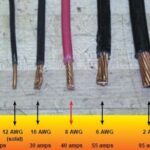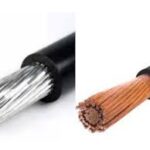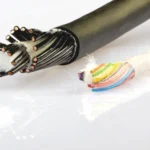THHN stands for Thermoplastic High Heat-resistant Nylon-coated. It is one of the most common types of wire used in residential, commercial, and industrial electrical applications in the United States.
THHN wire features a thermoplastic insulation, is rated for high heat, and includes a nylon jacket for added protection. This versatile wire is frequently used for conduit and cable tray wiring in dry or damp locations.
THHN Wire: What Each Letter Means
T – Thermoplastic: The insulation is made from a plastic polymer that melts at high temperatures, making it easy to manufacture and install.
H – High Heat-Resistant: The wire can withstand temperatures up to 90°C (194°F) in dry environments.
H – High Heat-Resistant (again): Reinforces its ability to handle high temperatures.
N – Nylon Jacket: A tough outer coating that protects the wire from abrasion, chemicals, and moisture.
Key Features of THHN Wire
Voltage Rating: 600 volts
Temperature Rating: Up to 90°C in dry locations, 75°C in wet locations
Jacket Material: Nylon for additional mechanical strength and chemical resistance
Common Conductors: Copper or aluminum
UL & NEC Compliance: Meets UL 83 and NEC Article 310 standards
Common Uses of THHN Wire
Electrical wiring in conduit systems
Wiring for commercial and industrial buildings
Machine tool wiring
Lighting and power distribution
Control circuits
🔧 Note: THHN is only rated for dry and damp locations, not for direct burial unless it is dual-rated as THHN/THWN-2.
THHN vs THWN vs THWN-2: What’s the Difference?
| Type | Max Temp (Dry) | Max Temp (Wet) | Nylon Jacket | Wet Location Use |
|---|---|---|---|---|
| THHN | 90°C | 75°C | Yes | Limited |
| THWN | 75°C | 75°C | Yes | Yes |
| THWN-2 | 90°C | 90°C | Yes | Yes ✅ |
Many modern THHN wires are dual-rated as THHN/THWN-2, making them more versatile.
Need THHN Wire?
TOT Wire & Cable offers a wide range of THHN and THHN/THWN-2 copper wires from 14 AWG to 4/0 AWG, ideal for conduit systems and general-purpose wiring. Contact us for bulk pricing and specifications.






